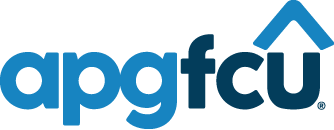Your business requires certain tools to accurately and efficiently perform, profit and succeed. However, technology, vehicle and machinery purchases can add up quickly and drain your savings. If you do not have enough cash flow to purchase the necessary equipment outright, you have two options: lease or loan.
Each includes benefits and drawbacks, so it is important to research your options before committing to an investment.
Equipment Leasing
Leasing a piece of equipment is similar to renting a property in that you will generally only be financially responsible for the monthly payment for the lease term. Equipment leasing typically does not require a down payment or collateral upfront but does include interest charges. Leasing is ideal for those looking to use equipment that will need frequent updates, such as computers. At the end of your lease agreement, you may choose to either renew your lease, purchase the equipment or walk away.
Leasing Pros
- Flexibility to introduce new equipment at a high turnover rate.
- No costly down payment.
- Higher cash flow to cover other operational expenses, such as payroll, inventory and bills.
- Ability to stay up-to-date with cutting-edge equipment.
Leasing Cons
- The additional expense of interest can cost you significantly more over time than buying the equipment in full.
- Set term lengths and mandatory service packages enforced by some lenders.
- Additional fees for damage to the equipment and storage costs if the lender-required term length extends beyond your desired timeframe.
Equipment Financing
On the other hand, if your business requires a more sustainable tool that is not expected to need frequent updates or repairs, you may consider purchasing it with the help of equipment financing. Lenders typically offer equipment loans based on the borrower’s intentions, the type of tool and if the piece of equipment is new or used. Lenders may require upfront funding, collateral or both to secure equipment financing. If you become delinquent with payments, your financial institution may be able to repossess the equipment.
Additionally, you will likely be required to pay a fixed-rate interest on your loan – often between 2% and 20% – and repay the loan in full within 12 to 72 months.1
Financing Pros
- Relatively easy application process with less emphasis on your financial history and credit score.
- Use of equipment without additional upfront costs.
- Significant tax deductions for small business owners.
Financing Cons
- High interest rates can add up long-term.
- The loan term cannot be amended if equipment breaks or becomes obsolete.
- You may end up paying for equipment that is not beneficial or even working.
Choosing whether to lease or loan your piece of equipment is a decision that can impact your finances, credit score and business for the foreseeable future. Decide which piece of equipment you need, its purpose and how long you intend to keep it, then select which option works best for you.
Visit our website for more financing options to help your business achieve, prosper and grow.
